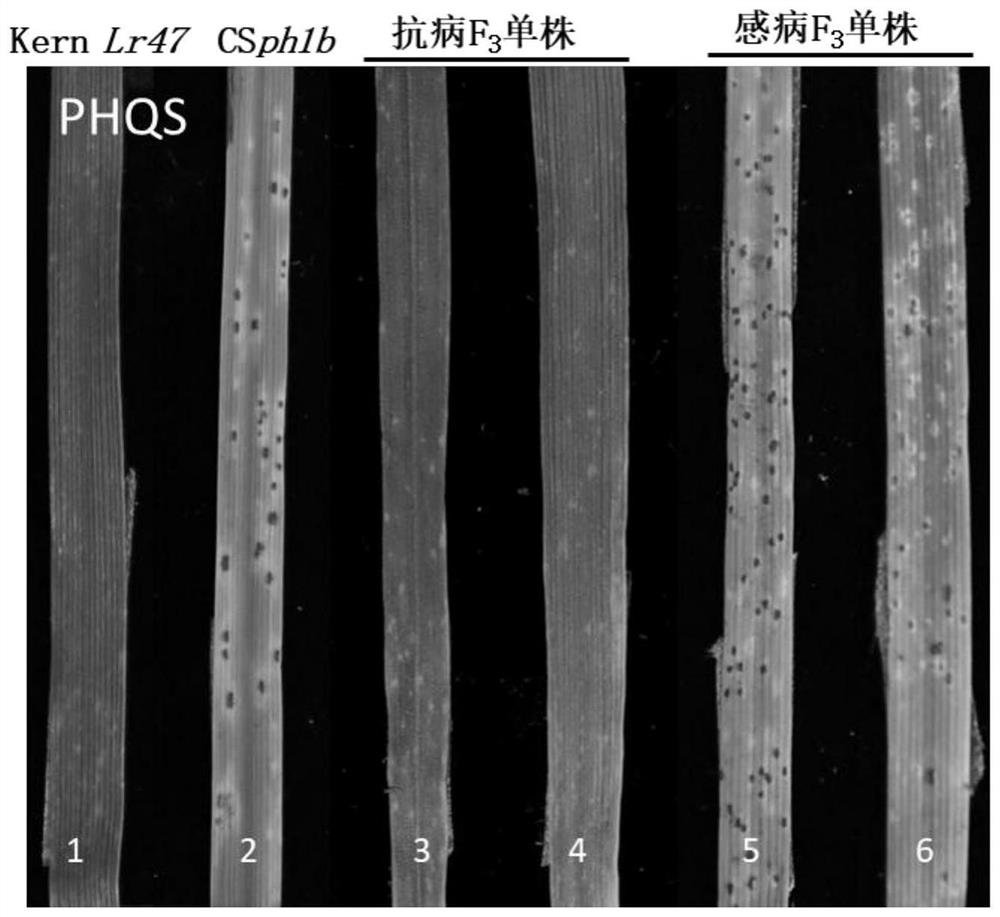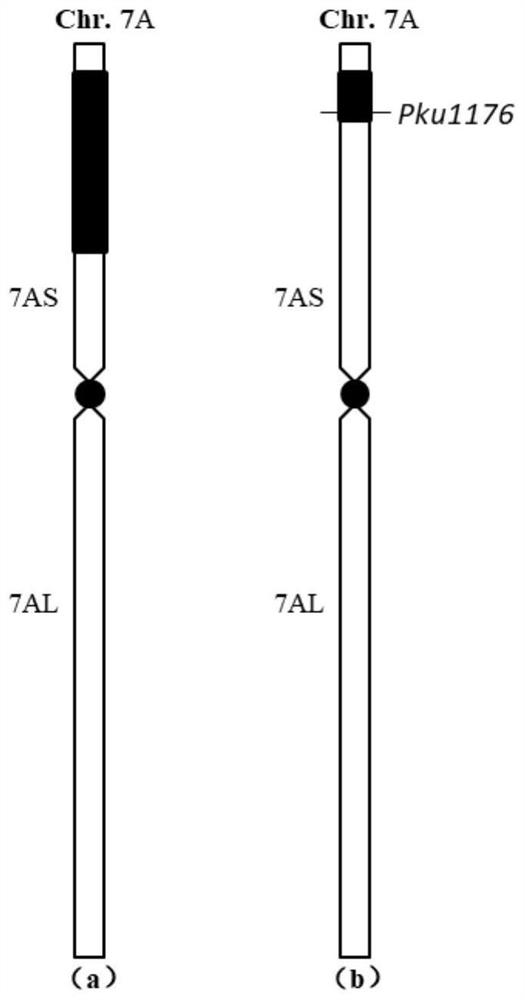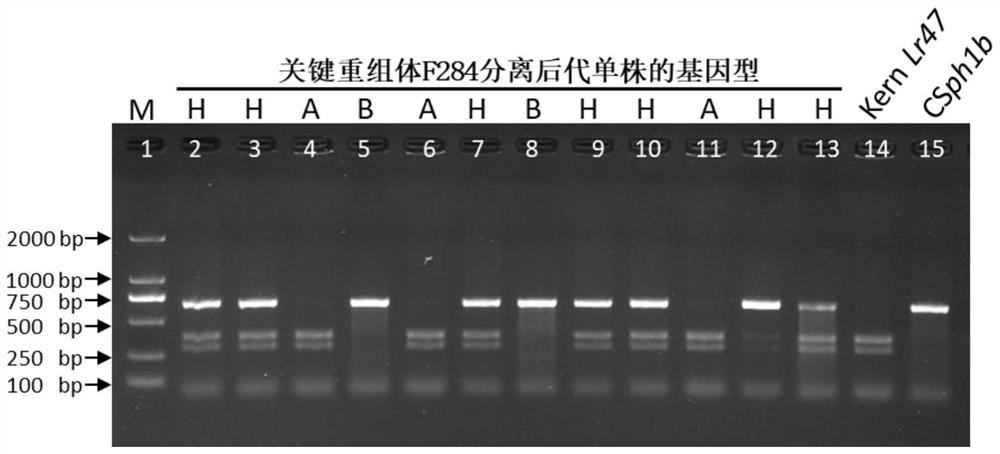Molecular marker for detecting wheat leaf rust resistance gene Lr47, detection method and application of molecular marker
A technology of leaf rust resistance gene and molecular marker, which is applied in the field of molecular genetic breeding, can solve the problem of the difficulty of wheat rust resistance gene, and achieve the effect of low detection difficulty
- Summary
- Abstract
- Description
- Claims
- Application Information
AI Technical Summary
Problems solved by technology
Method used
Image
Examples
Embodiment 1
[0051] Embodiment 1. Indoor seedling stage leaf rust resistance identification
[0052] The disease-resistant parent Kern Lr47 and the susceptible parent CSph1b were planted in the artificial climate chamber. The conditions of the artificial climate chamber were: 16 hours of light, 8 hours of darkness, 25°C during the day, 22°C at night, and 80-90% humidity. When the seedlings grow to the stage of two leaves and one heart, they are inoculated with the highly toxic physiological race PHQS of leaf rust by manual sweeping. Dark and moisturizing treatment for 24 hours after inoculation. After 12 days of inoculation, the materials were identified for leaf rust resistance, and the identification method was carried out according to the grading standard of 0-4 (Note: 0 is immune; 0 is near immune; 1 is high resistance; 2 is moderate resistance; 3 Grade 4 is medium sense; grade 4 is high sense). The results showed that: Kern Lr47 showed near immune resistance, while CSph1b showed hig...
Embodiment 2
[0054] Example 2. Creation of a short-segment translocation line of Pseudospeltia spp.
[0055] The lack of high-quality reference genomes and the cross-pollination characteristics of this species lead to large sequence differences among different materials, which has caused certain difficulties in the development of specific molecular markers. The transcriptomes and The exome sequencing data, combined with the reference genome sequence and bioinformatics analysis of all sequenced wheat, found the specific SNPs (single nucleotide polymorphism, single nucleotide polymorphism) of the 7S chromosome of Alpinia spelta, and obtained SNPs data also indicated that Kern Lr47 carried about 150Mb of 7S chromosome fragment. This application uses the method of the Chinese spring ph1b mutant to narrow down the chromosome interval where the foreign gene is located. After knowing the range of the gene position, it is possible to further develop tightly linked molecular markers. Multiple gen...
Embodiment 3
[0060] Example 3. Short fragments of Goatwort pseudospelts resistant to leaf rust are transferred to the main cultivars of common wheat
[0061] To transfer the reduced 7S chromosome segment to common wheat cultivars, individual plants containing homozygous short 7S chromosome segments identified from recombinant F284 progeny (eg, image 3 The individual plants corresponding to lanes 4, 6, and 11) were crossed with the common wheat variety Yangmai 21 to obtain F 1 .
[0062] Using the molecular marker Pku1176 to perform PCR amplification on the genome DNA of a single plant of the progeny population of the recombinant F284 x Yangmai 21, the specific reaction system is as follows:
[0063] DNA template (100ng / μL) 0.5μL
[0064] 2×Taq Plus PCR MasterMix 6.25 μL (Ruibo Xingke Company)
[0065] 0.5 μL each of 10 μM primers
[0066] ddH 2 O make up to 12.5 μL
[0067] PCR amplification reaction program: pre-denaturation at 94°C for 3min; denaturation at 94°C for 30s, annealing...
PUM
 Login to View More
Login to View More Abstract
Description
Claims
Application Information
 Login to View More
Login to View More - R&D
- Intellectual Property
- Life Sciences
- Materials
- Tech Scout
- Unparalleled Data Quality
- Higher Quality Content
- 60% Fewer Hallucinations
Browse by: Latest US Patents, China's latest patents, Technical Efficacy Thesaurus, Application Domain, Technology Topic, Popular Technical Reports.
© 2025 PatSnap. All rights reserved.Legal|Privacy policy|Modern Slavery Act Transparency Statement|Sitemap|About US| Contact US: help@patsnap.com



